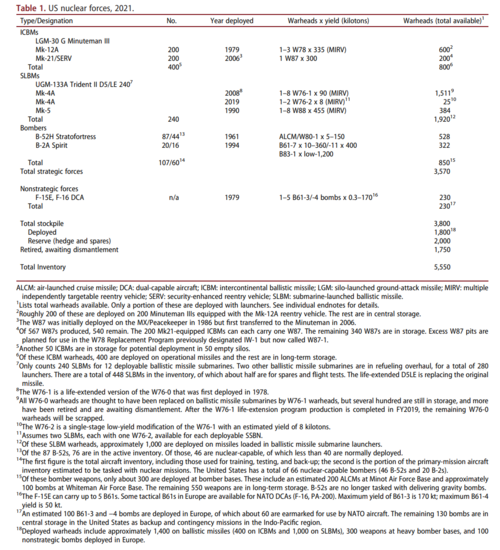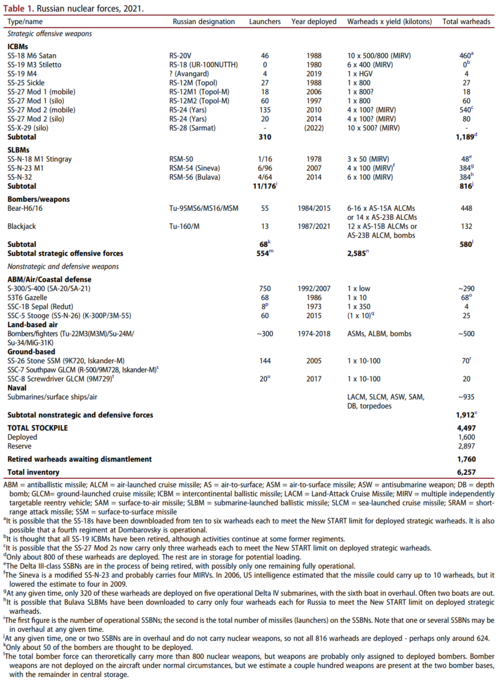For example, the US keeps a number of big Megaton warheads available to my understanding. Presumably for a specific reason.....
Nothing "really" big, not in the open sources at least. Biggest in the current acknowledged arsenal is the B83, with a max yield of about 1.2Mt, and those are set up as plain gravity bombs for use on the B-2 Spirit (and one presumes probably the B-21 Raider). What exactly they'd be useful for is...unclear to me, since the B61 is/was being developed into a bunker buster warhead.
Big is relative, of course, when I say the B83 is small I'm talking in comparison to the multi-megaton beasts of the Cold War era. The last of the B53/W53 (Titan II warhead) 9Mt hard site killers were disassembled in 2011 - with the interesting possibility that several physics packages ("canned sub-assemblies") are being retained for reasons unknown, the lead speculation being asteroid defense. And of course the biggest American nuke was the B41, with a three-stage design comparable to the Tsar Bomba and an estimated yield of 25Mt (retired in 1976).














